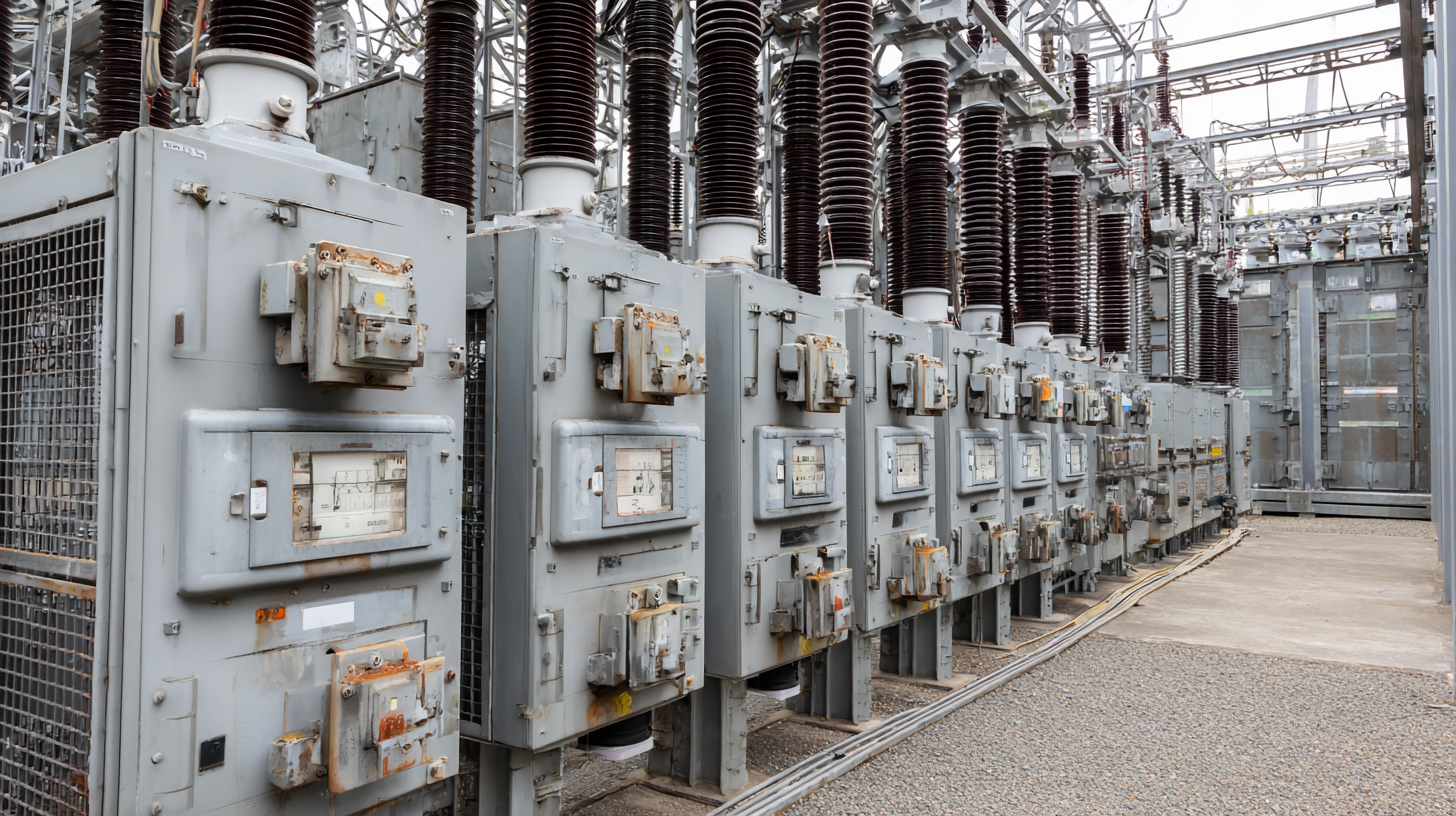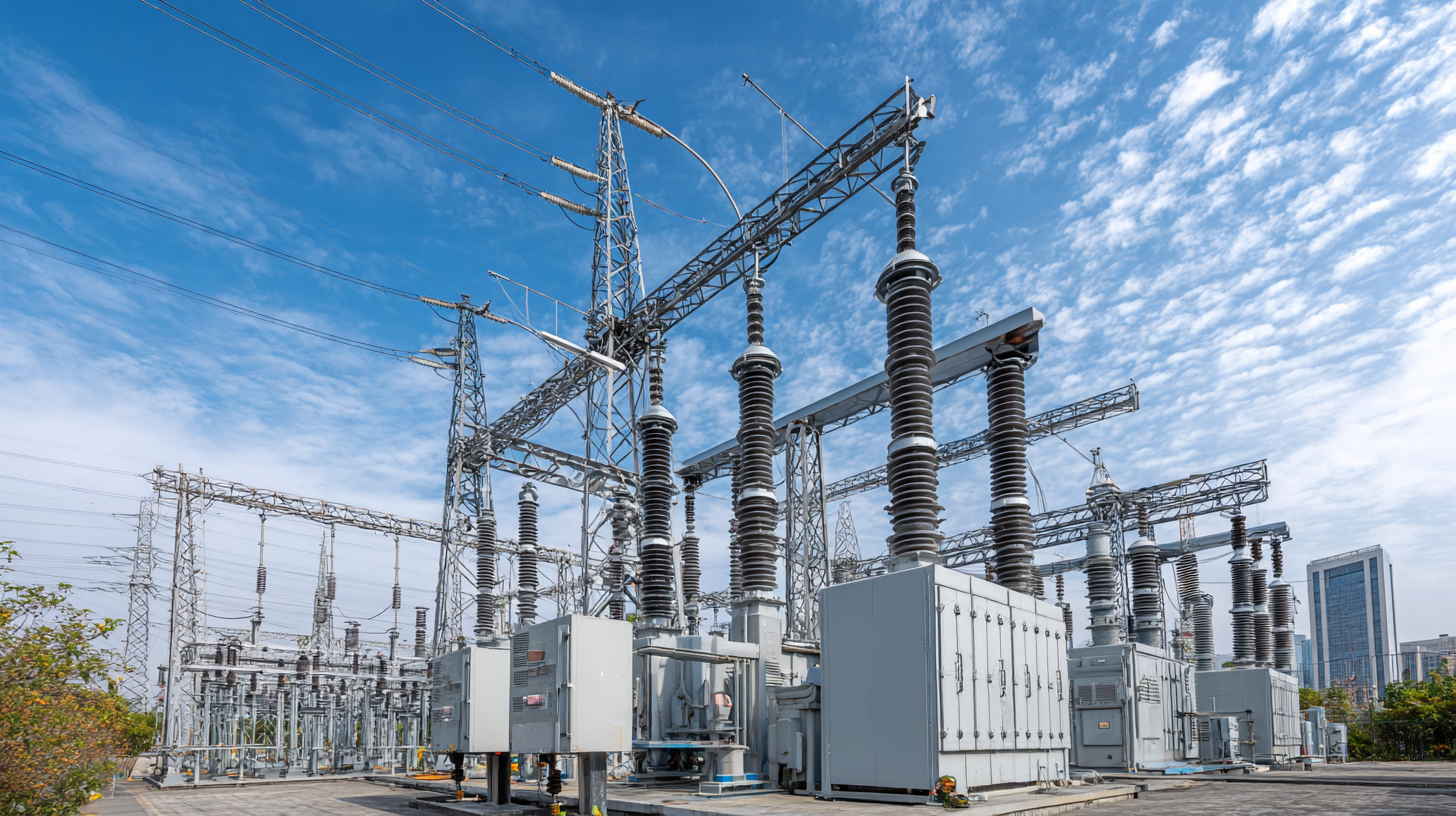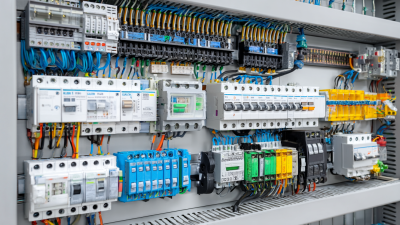The landscape of energy distribution is undergoing a significant transformation, especially in the realm of medium voltage power systems. As the demand for reliable and efficient energy solutions continues to rise, industry experts predict that the global medium voltage power systems market will exceed USD 70 billion by 2027, growing at a compound annual growth rate (CAGR) of 5.8% from 2022 to 2027. This growth is primarily driven by innovations in technology and the increasing integration of renewable energy sources into the grid, necessitating advancements in infrastructure to support these changes.
In 2023, several key trends are shaping the future of medium voltage power systems, including the adoption of smart grid technologies, enhanced automation processes, and the implementation of energy management systems that bolster efficiency and reliability. Reports indicate that the integration of smart technologies could lead to a 20% reduction in energy losses within medium voltage networks, highlighting the potential for significant economic benefits. Additionally, with the global push towards decarbonization, medium voltage systems are evolving to accommodate distributed energy resources (DERs), which are expected to comprise 30% of total electricity generation by 2030.
This overview will explore the top five trends in medium voltage power systems, dissecting how these innovations are not only transforming energy distribution but also shaping a more sustainable and resilient energy future.

Medium voltage power systems play a crucial role in the modern energy distribution landscape, serving as the backbone that connects high voltage transmission networks to low voltage users. Operating typically between 1 kV and 35 kV, these systems are essential for distributing electricity to industrial plants, commercial buildings, and residential areas. As urbanization continues to accelerate, the demand for efficient and reliable energy distribution is more pressing than ever, making the evolution of medium voltage systems both necessary and urgent.
Innovations in this sector are transforming how energy is managed and delivered. For instance, the integration of smart grid technology enables real-time monitoring and management of power flows, enhancing reliability and efficiency. Furthermore, advancements in equipment such as switchgear, transformers, and protective devices have improved the resilience of medium voltage networks, supporting the integration of renewable energy sources. This evolution not only addresses the growing energy demands but also contributes to sustainability goals by optimizing energy use and reducing carbon footprints. In this dynamic environment, medium voltage power systems are not just conduits for electricity; they are pivotal in shaping the future of energy distribution.
 The landscape of medium voltage power systems is undergoing significant transformation in 2023, driven by key innovations that enhance efficiency and reliability. One of the most impactful trends is the integration of smart grid technologies. These advancements facilitate real-time data collection and analysis, enabling utilities to optimize energy distribution and improve response times during outages. With the incorporation of IoT devices and advanced analytics, operators can proactively manage their grids, leading to reduced downtime and enhanced service quality.
The landscape of medium voltage power systems is undergoing significant transformation in 2023, driven by key innovations that enhance efficiency and reliability. One of the most impactful trends is the integration of smart grid technologies. These advancements facilitate real-time data collection and analysis, enabling utilities to optimize energy distribution and improve response times during outages. With the incorporation of IoT devices and advanced analytics, operators can proactively manage their grids, leading to reduced downtime and enhanced service quality.
Another notable innovation is the adoption of energy storage solutions within medium voltage grids. By utilizing technologies such as battery energy storage systems (BESS), utility companies can store excess energy generated during low-demand periods and release it when demand peaks. This not only stabilizes grid operation but also supports the integration of renewable energy sources, making the system more sustainable.
Tips:
1. Consider investing in smart technologies that enhance grid monitoring and management for improved operational efficiency.
2. Explore energy storage options to better balance supply and demand, ultimately lowering energy costs and increasing reliability.
3. Stay informed about emerging innovations in medium voltage systems, as they can provide competitive advantages in energy distribution.
The integration of smart technologies in medium voltage power systems is significantly transforming energy distribution in 2023. Enhanced monitoring and control capabilities are critical as industries move towards digitized and intelligent frameworks, evidenced by recent reports indicating that the market for remote home monitoring systems is expected to grow by $40.6 billion by 2032, with a compound annual growth rate (CAGR) of 9.55% from 2024 to 2032.
As manufacturers embrace these innovations, the implementation of AI-powered tools is becoming increasingly essential. Notably, the SCADA software market is projected to reach $23.1 billion by 2034, growing from $1 billion in 2024, highlighting a clear trend towards automated monitoring solutions. This evolution allows for real-time data collection and analysis, which is crucial for optimizing operations and ensuring reliability in energy distribution. The fusion of smart technologies not only enhances operational efficiency but also plays a vital role in meeting the rising demand for sustainable and resilient energy systems.
The integration of renewable energy sources, such as solar and wind power, is dramatically reshaping medium voltage infrastructure in 2023. These innovations not only contribute to environmental sustainability but also enhance the efficiency and reliability of energy distribution systems. As small-scale generation becomes more prevalent, utilities face new challenges in optimizing the balance between traditional and renewable energy sources, emphasizing the need for advanced management solutions.
**Tips: Maintain proactive service strategies.** Regular maintenance of medium voltage systems is critical to ensuring their stability under changing conditions. Combining thorough routine check-ups with the latest technologies, like digital twins, allows energy companies to closely monitor system behavior and anticipate issues effectively.
Another crucial aspect of this transition is the deployment of new grid technologies, such as medium-voltage silicon carbide converters. These innovations promise to facilitate a smoother integration of renewable energies into existing networks, thus enhancing overall grid stability. **Tips: Embrace cutting-edge technology.** By investing in the latest advancements, utilities can manage the growing complexity of energy distribution while meeting surging demand and maintaining cost-effectiveness.
| Trend | Description | Impact on Infrastructure | Adoption Rate (%) |
|---|---|---|---|
| Integration of Renewable Energy | Increased deployment of solar and wind energy in medium voltage grids. | Requires upgrades to existing transformers and substations. | 65% |
| Smart Grid Technology | Utilization of IoT and AI for real-time monitoring and management. | Enhances efficiency and reliability of power distribution. | 52% |
| Energy Storage Solutions | Deployment of batteries to store excess energy. | Supports grid stability and demand response capabilities. | 55% |
| Decentralized Energy Generation | Local generation systems reducing transmission losses. | Modifies traditional grid architecture. | 50% |
| Enhanced Grid Resilience | Focus on minimizing outages and improving recovery times. | Investment in infrastructure upgrades and maintenance. | 58% |
Future-proofing medium voltage power systems is essential as energy distribution continues to evolve. One significant trend is the integration of digital technologies. By adopting smart grid innovations, operators can enhance monitoring and control, resulting in optimized performance and reduced outages. Smart sensors and IoT devices allow for real-time data collection, enabling predictive maintenance strategies that can extend the lifespan of equipment while minimizing downtime.
Another critical aspect of future-proofing these systems involves adopting sustainable practices. The increasing shift towards renewable energy sources necessitates that medium voltage systems adapt to variable inputs. Implementing energy storage solutions, such as battery systems, can help balance supply and demand effectively. Furthermore, establishing flexible grid architectures that accommodate decentralized energy generation will enhance resilience and efficiency in distribution networks. By embracing these trends, stakeholders can ensure that medium voltage power systems are not only effective today but also robust against future challenges.






